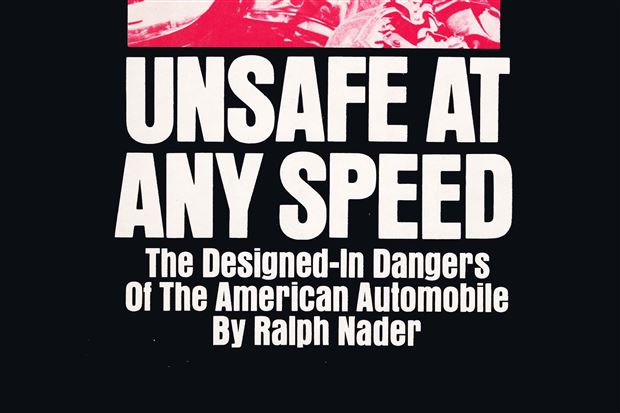A book was released in 1965 that changed the American automobile industry forever. Written by a little known lawyer by the name of Ralph Nader, Unsafe at Any Speed: The Designed-In Dangers of the American Automobile was the title. The subject material was a dramatic look at the way the auto industry viewed its responsibility to build safe automobiles.
A focus on the Corvair
As Lakeland Chrysler of Greenville, PA, a Crysler, Dodge, Jeep, Ram dealer explained to us, Nader’s book is often tied to an extremely critical review of the Corvair, a rear-engine, air-cooled compact car made in the 1960s by Chevrolet. While Unsafe at Any Speed did focus on the Corvair, the book was really an indictment of the entire industry. For example, Nader included chapters on lack of safety features, such as seat belts; the pollution concerns from internal combustion engines; and the lack of any sort of safety testing at all by the major car manufacturers.
Worst of all, the book illuminated the concept that most automotive executives did not seem terribly concerned about most of the dangerous issues involved with their automotives at all. It just wasn’t a priority in the industry. The last chapter of Unsafe at Any Speed, in particular, discussed the difficult battle that safety advocates faced in spite of statistics that showed that thousands of Americans were being killed every year in car accidents.
Not so “Good for General Motors”
The book wasn’t just the opinions of a curmudgeon with too much time on his hands. It was a fact-filled dissertation that vaulted Nader into a highly visible legal career of questioning the motives behind the policy and practice of the entire automotive industry. It would be safe to say that Unsafe at Any Speed threw water on the once famous comment by a General Motors executive Charles Irwin Wilson that “What is good for General Motors is good for America.”
After Unsafe at Any Speed was released, a great deal of change in the automotive industry occurred. It was painful at the time but as the decades since show, the auto industry actually profited by the publishing of Nader’s book. By pushing for safety technology that all of the American carmakers were forced to adopt, the automotive manufacturers potentially saved millions of dollars in future lawsuits. Here’s a fact to consider: In 1980, 23 people out of 100,000 died annually in car crashes. Today, thanks to hundreds of federal safety regulations, the rate is less than 10 per 100,000. That works out to some 400 lives a year are saved.
Nader is still concerned, though
Nader recently commented that he was terribly concerned that “The auto industry wants to turn the car into an entertainment center.”. He is especially concerned that all the multitasking that occurs in today’s gadget laden cars can be distracting. He insists the car manufacturers should make sure that their accessories and gadgets don’t interfere with the basic concept of safe driving. There is no question that car buyer are drawn to the technology of new cars but Nader calls upon the industry to resist this and focus on the safety of cars.
Image Source: autos.ca

